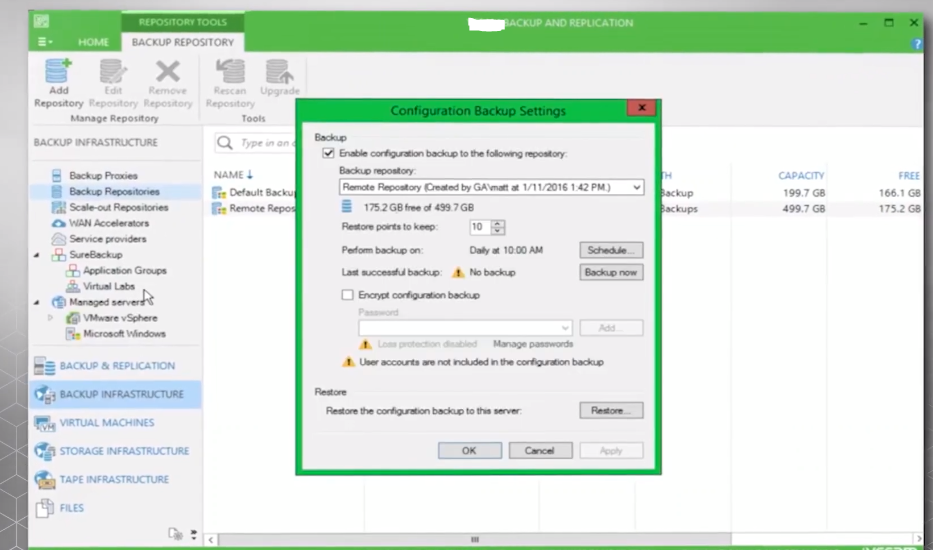Introduction Of Data Retention
Data retention is the practice of keeping information stored for an extended period. Businesses and organizations must retain data for various reasons such as legal compliance, historical records, and analysis purposes. However, retaining data for a long time can also pose risks such as data breaches, loss of sensitive information, and unauthorized access. Therefore, it is essential to have a comprehensive plan in place to safeguard your data and ensure its integrity and confidentiality. In this guide, we will discuss the best practices for long-term data retention and how to protect your data from potential threats.
Understanding Data Retention

Data retention refers to the length of time that data is stored and maintained in a system or database. It is important to have a clear understanding of data retention policies, both for legal and practical reasons. Legal Requirements: Certain laws and regulations may require organizations to retain certain types of data for a specific period. For example, financial institutions may be required to retain financial records for a minimum of seven years. Failure to comply with these regulations can result in legal penalties.
Practical Considerations: Beyond legal requirements, it is important to consider practical factors when determining data retention policies. For example, retaining data for too long can lead to unnecessary storage costs and potential security risks. On the other hand, deleting data too soon can result in the loss of important information.
To determine the appropriate data retention policy for your organization, consider factors such as legal requirements, business needs, and security considerations. It may be helpful to consult with legal and IT professionals to ensure that your policies comply with regulations and best practices.
Factors Influencing Data Retention
When determining the appropriate data retention policy for your organization, several factors should be taken into consideration:
1. Legal requirements: Depending on your industry and location, there may be specific laws and regulations that dictate how long certain types of data must be retained. Failure to comply with these requirements can result in legal and financial consequences.
2. Business needs: It’s important to consider why you are collecting and storing data in the first place. Determine how long you need to keep data to meet your business needs, such as customer service or analysis.
3. Security considerations: The longer data is stored, the greater the potential risk of a security breach. Consider implementing measures such as encryption and access controls to mitigate these risks.
4. Cost considerations: Storing data can be expensive, especially if you’re storing large amounts of data. Consider the cost of storage and weigh it against the benefits of retaining the data.
By considering these factors, you can develop a data retention policy that meets the needs of your organization while minimizing risk and cost.
Best Practices For Long-Term Data Retention
Here are some best practices for long-term data retention:
1. Regularly review and update your data retention policy: As your organization grows and changes, your data retention needs may also change. It’s important to regularly review and update your policy to ensure it remains relevant and effective.
2. Use a tiered approach to data retention: Not all data is created equal. Consider implementing a tiered approach to data retention, where you retain critical data for longer periods and non-critical data for shorter periods.
3. Implement a secure backup and recovery strategy: Backing up your data is critical for long-term retention. Make sure you have a secure backup strategy in place that includes regular testing and recovery procedures.
4. Consider cloud storage options: Cloud storage can be a cost-effective and scalable option for long-term data retention. Be sure to choose a reputable provider and implement appropriate security measures.
5. Train employees on data retention policies: Your employees play a critical role in data retention. Make sure they understand your data retention policies and are trained on how to properly store and manage data.
By following these best practices, you can ensure that your organization’s data is retained securely and cost-effectively.
Long-Term Data Retention Solutions
A. Archiving Solutions And Practices
In addition to the best practices mentioned earlier, archiving solutions and practices can also help with long-term data retention. Archiving involves moving older data that is no longer in active use to a separate storage system or medium that is designed for long-term retention. This can help free up space on primary storage systems and reduce costs associated with maintaining and managing large amounts of data. Archiving solutions can vary depending on the type of data being archived and the specific needs of the organization. Some common types of archiving solutions include tape-based systems, cloud-based systems, and disk-based systems. It’s important to choose an archiving solution that is secure, reliable, and cost-effective.
In addition to choosing an archiving solution, it’s important to establish clear archiving practices and policies. This includes defining what data should be archived, how often it should be archived, and how long it should be retained. It’s also important to establish procedures for accessing and retrieving archived data when needed.
By implementing archiving solutions and practices, organizations can ensure that their data is retained securely and cost-effectively for the long term.
B. Digital Preservation Techniques
Digital preservation techniques are essential for ensuring that digital information remains accessible and usable over time. Some of these techniques include:
1. Migration: This involves moving digital content from one platform or format to another to ensure that it remains accessible as technology changes.
2. Emulation: This involves creating a software environment that mimics the original hardware and software used to create or access digital content, allowing it to be accessed and used as intended.
3. Backups: Regular backups of digital content ensure that it can be restored in the event of data loss or corruption.
4. Metadata: Metadata provides important contextual information about digital content, such as its creator, date of creation, and file format, which can help ensure its long-term preservation.
By implementing these digital preservation techniques, organizations can ensure that their digital information remains accessible and usable for future generations.
Difference Between Disaster Recovery And Data Retention

Disaster recovery and data retention are two different concepts in the field of data management. Disaster recovery refers to the process of restoring critical systems and data after a disaster or unexpected event that causes data loss or system downtime. The goal of disaster recovery is to minimize the impact of the event and restore normal operations as quickly as possible. On the other hand, data retention refers to the policies and procedures that govern how long data should be kept and when it should be deleted. The purpose of data retention is to ensure that data is available for legal or business requirements, such as compliance regulations or auditing purposes.
Legal Requirements For Data Retention
The legal requirements for data retention vary depending on the country, industry, and type of data being stored. For example, in the United States, several federal laws require certain types of data to be retained for specific periods, such as the Sarbanes-Oxley Act and the Health Insurance Portability and Accountability Act (HIPAA). Additionally, some states have their own data retention laws. In the European Union, the General Data Protection Regulation (GDPR) outlines specific requirements for data retention and deletion. Organizations need to research and understand the legal requirements for data retention in their specific jurisdiction and industry.
How To Securely Store Data On Your Computer?
To securely store data on your computer, you can follow these best practices:
1. Use strong passwords: Set strong passwords for your computer and all user accounts. Avoid using easily guessable passwords such as your birthdate or common words.
2. Encrypt your data: Use encryption software to encrypt sensitive data stored on your computer. This will protect your data from unauthorized access even if your computer is stolen or hacked.
3. Use a firewall: A firewall can help prevent unauthorized access to your computer and network. Make sure to enable the firewall on your computer and keep it up to date.
4. Keep your software up to date: Regularly update your operating system, antivirus software, and other applications to ensure that they have the latest security patches.
5. Backup your data: Regularly back up your data to an external hard drive or cloud-based storage service. This will ensure that you have a copy of your data in case of data loss or corruption.
By following these best practices, you can ensure that your data is securely stored on your computer and protected from potential threats.
Conclusion
In conclusion, disaster recovery and data retention are both important aspects of data management. Disaster recovery focuses on restoring systems and data after a disaster, while data retention focuses on managing data over time to meet legal and business requirements. Organizations need to have both strategies in place to ensure the availability and security of their data.
Implementing robust data retention strategies is crucial for businesses to comply with legal requirements, avoid legal disputes, and ensure efficient and effective management of data. It also helps organizations to maintain a competitive edge by enabling them to access historical data for analysis and decision-making. Effective data retention strategies should include proper data classification, retention policies, secure storage, and regular review and disposal of outdated data. Overall, implementing robust data retention strategies is a critical component of successful data management for any organization.
Frequently Asked Questions (FAQs)
What Is Data Retention?

Data retention refers to the practice of keeping and storing data for a certain period, usually for legal or regulatory compliance purposes. This can include personal information, financial records, and other types of data that may be important for future reference or analysis. Organizations need to have a clear data retention policy in place to ensure that they are storing data appropriately and securely.
How Long Should Data Be Retained?
The length of time that data should be retained depends on various factors, such as legal or regulatory requirements, the type of data being stored, and the organization’s specific needs. For example, some types of financial records may need to be retained for several years, while other types of data may only need to be kept for a few months. It is important for organizations to carefully consider these factors when developing their data retention policies.
What Are The Risks Of Not Retaining Data Properly?
Not retaining data properly can have serious consequences for organizations. Here are some of the risks:
1. Legal and regulatory penalties: Failure to comply with data retention laws and regulations can result in fines, legal action, and damage to an organization’s reputation.
2. Litigation risks: If an organization is involved in a legal dispute, not having the necessary data can weaken its case and result in unfavorable outcomes.
3. Loss of business insights: Data is a valuable asset that can provide insights into customer behavior, market trends, and business operations. If data is not retained properly, organizations may lose out on these insights and miss opportunities to improve their operations and make informed decisions.
4. Security risks: Data that is not properly retained can be vulnerable to cyberattacks, data breaches, and other security threats. This can result in the loss of sensitive information and damage to an organization’s reputation.
Is Cloud Storage Security For Long-Term Data Retention?
Cloud storage can be secure for long-term data retention if the proper security measures are in place. Cloud service providers typically have robust security protocols and infrastructure in place to protect data from cyberattacks, data breaches, and other security threats.
However, it is important for organizations to carefully choose a reputable cloud service provider and to ensure that their data is encrypted and backed up regularly. Additionally, organizations should regularly monitor their cloud storage for any unauthorized access or suspicious activity.
How Can Encryption Help In Securing Data For The Long Term?
Encryption can help in securing data for the long term by converting the original data into an unreadable format that can only be deciphered with a specific key or password. This makes it much more difficult for unauthorized users to access or steal sensitive information. Additionally, encryption can provide an extra layer of protection in case of a data breach or cyber attack. By encrypting data before storing it in the cloud, organizations can ensure that even if their data is compromised, it will be much more difficult for cybercriminals to access and use the information. Overall, encryption is a crucial tool for securing data in the cloud and should be implemented by all organizations that store sensitive information online.
What Is The Role Of Data Classification In Data Retention?
The role of data classification in data retention is to determine the appropriate retention period for different types of data based on their level of sensitivity and importance. Data classification helps organizations identify which data must be retained for legal or regulatory compliance purposes, and which data can be deleted after a certain period. By categorizing data based on its value and risk, organizations can ensure that they are not retaining unnecessary data that could potentially put them at risk in the event of a data breach or cyber attack. Additionally, data classification can help organizations prioritize their data retention efforts and allocate resources more effectively.
How Often Should Data Backups Be Performed?
The frequency of data backups depends on the specific needs and requirements of an organization. Generally, backups should be performed regularly and frequently enough to ensure that in the event of a data loss or corruption, the most recent backup can be restored with minimal data loss. Some organizations may perform backups daily, while others may do so weekly or monthly. It is important to consider factors such as the volume of data, the criticality of the data, and the potential impact of data loss when determining the frequency of backups. It is also recommended to regularly test and verify the integrity of backups to ensure their effectiveness in restoring data.
How Can I Ensure The Integrity Of Retained Data?
To ensure the integrity of retained data, it is important to follow best practices for data backup and storage. This includes:
1. Regularly backing up data: As mentioned earlier, regular backups are essential to ensure that data can be restored in the event of a disaster or data loss. The frequency of backups should be based on the volume and criticality of the data being backed up.
2. Storing backups securely: Backups should be stored in a secure location, preferably offsite, to prevent loss or damage due to natural disasters, theft, or other events. Access to backups should be restricted to authorized personnel only.
3. Encrypting backups: Encrypting backups can help to protect sensitive data from unauthorized access. This is particularly important when backups are being stored offsite or in the cloud.
4. Testing backups regularly: It is important to regularly test and verify the integrity of backups to ensure that they can be restored in the event of a disaster or data loss. This should include testing both the backup process and the restore process.
5. Maintaining a backup retention policy: A backup retention policy should be established to determine how long backups should be retained and when they should be deleted.
